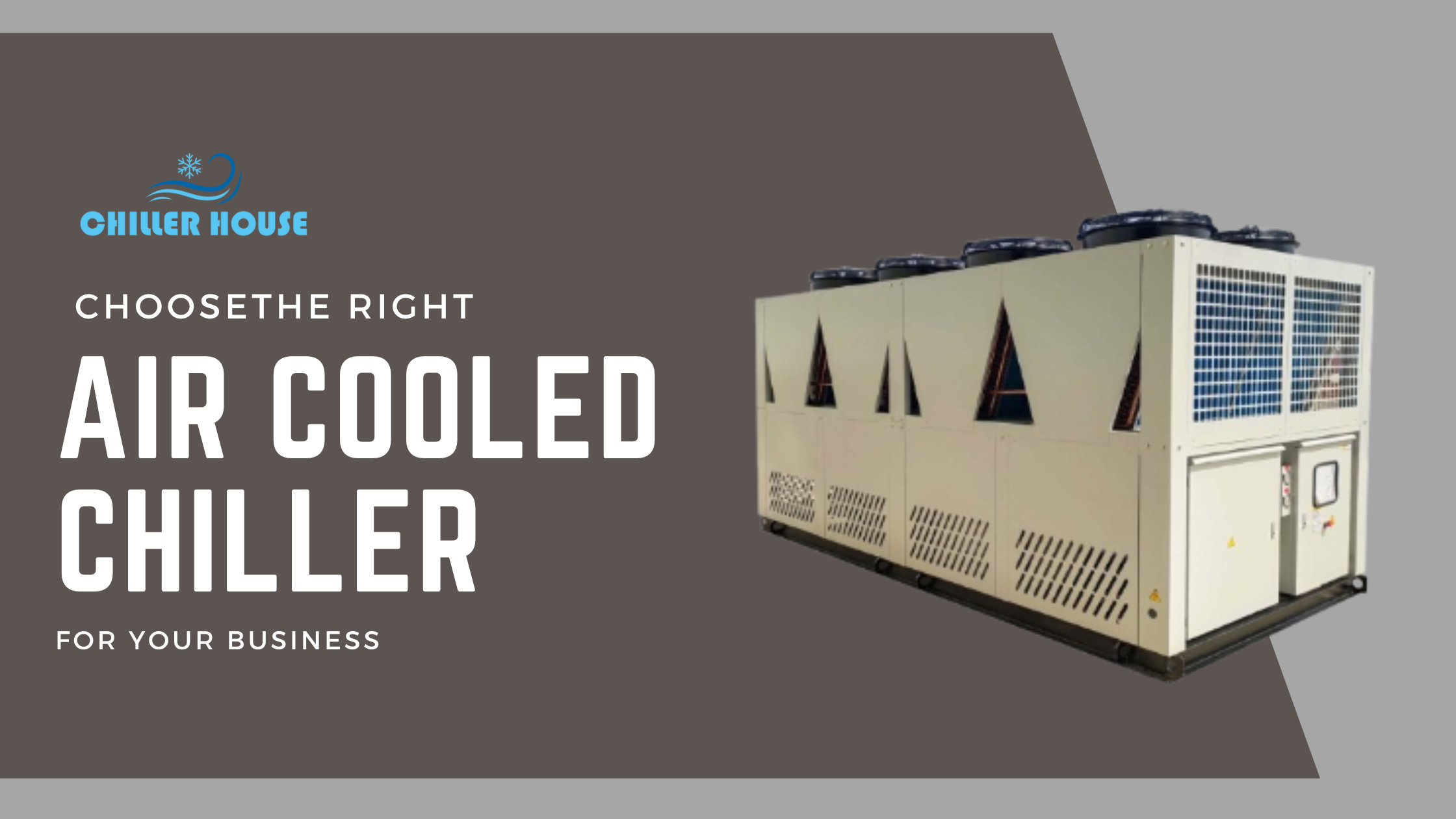Introduction
Running a business is already challenging enough without having to worry about managing the heat generated by your processes or equipment. But when your cooling system fails or isn’t performing at its best, it’s a problem you can’t ignore. Air-cooled chillers offer a robust solution for businesses that need reliable cooling without the hassle of managing large quantities of water. From energy efficiency to ease of maintenance, they provide an excellent alternative to water-cooled systems.
In this guide, we’re going to dive deep into everything you need to know about air-cooled chillers. Whether you’re looking for your first system or considering upgrading an existing one, this post will help you make an informed decision.
What Are Air-Cooled Chillers and Why Do You Need One?
A Quick Overview
Air-cooled chillers are cooling systems that remove heat by dissipating it into the surrounding air. They don’t require a cooling tower or a water source, which is what sets them apart from water-cooled chillers.
For businesses, this means less complexity and lower maintenance requirements, making them an attractive option for many industries, from manufacturing plants to data centers.
Why Air-Cooled Chillers Are Best for Your Business
Why should you consider an air-cooled chiller over other types of cooling systems? Here are some key reasons:
- Energy Efficiency: Modern air-cooled chillers are designed with energy-saving features that reduce electricity consumption, which is especially valuable for businesses with high cooling demands.
- Lower Maintenance Costs: Since air-cooled chillers don’t need water, you eliminate the need for water treatment, which can be both expensive and time-consuming.
- Versatility: These systems are incredibly versatile and can be used across various applications and industries. They are especially useful for businesses in areas where water supply is limited or expensive.
The Advantages of Air-Cooled Chillers
1. Energy Efficiency Saves Money Over Time
It’s no secret that energy consumption costs can be one of the most significant expenses for a business, especially when cooling needs are high. Air cooled chillers are known for their energy efficiency, particularly those equipped with variable-speed drives (VSD). These drives adjust the system’s power usage based on current demand, ensuring that you’re not wasting electricity during periods of low cooling needs.
- Lower Operating Costs: Using less energy means lower electricity bills, and who doesn’t want to save money?
- Reduced Carbon Footprint: Air Cooled Chillers not only help businesses cut costs, but they also contribute to sustainability efforts by reducing energy consumption.
2. Minimal Maintenance Requirements
Maintenance is a critical consideration when choosing any type of machinery or equipment for your business. The fewer parts a system has, the less likely it is to break down, right? That’s one of the big benefits of air-cooled chillers. With no need for a cooling tower, you automatically cut down on equipment and the potential for failures.
- No Water Treatment: Say goodbye to water treatment chemicals and the extra labor required to manage water-cooled systems.
- Longer Equipment Life: With fewer components, air-cooled chillers are often more durable and experience fewer breakdowns compared to water-cooled systems.
3. Flexibility in Installation
One of the often-overlooked benefits of air-cooled chillers is the flexibility they offer in terms of installation. Unlike water-cooled chillers, which usually require dedicated indoor space, air-cooled chillers can be installed in a variety of locations.
- Outdoor Installations: These units are often installed outdoors, either on the roof or in parking lots, saving valuable indoor space for your core operations.
- Easier Relocation: If you ever need to move your facility or reconfigure your equipment, air-cooled chillers can be relocated more easily than water-cooled systems.
The Challenges of Air-Cooled Chillers in Pakistan
While air-cooled chillers offer many advantages, it’s also essential to understand the challenges that come with them. Knowing what to expect can help you make a well-rounded decision.
1. Potential for Higher Initial Costs
Air-cooled chillers are often more expensive upfront than water-cooled systems. This can make them seem like a less attractive option if you’re working with a tight budget.
2. Impact of Ambient Temperature on Efficiency
Air-cooled chillers depend on the surrounding air to dissipate heat, which means their efficiency can be impacted by high ambient temperatures. In regions where summers are scorching, this could lead to a decline in performance during the hottest months.
3. Sizing the Chiller Properly
One of the biggest challenges businesses face is selecting the correct size chiller for their needs. An undersized chiller may struggle to keep up with cooling demands, leading to higher energy consumption and potential equipment failures. Conversely, an oversized chiller could result in wasted energy and higher operational costs.
How to Overcome Them
- It’s crucial to look beyond the initial price tag and consider the long-term savings in energy and maintenance. Over the lifespan of the chiller, these systems typically end up being more cost-effective.
- To mitigate this, look for units with advanced temperature controls or install the chiller in a shaded or well-ventilated area to improve cooling efficiency.
- Always consult with HVAC professionals who can help you accurately calculate your cooling load and recommend the right size chiller for your facility.
Key Factors to Consider When Choosing an Air-Cooled Chiller
Now that you understand the advantages and challenges of air-cooled chillers and also some points to overcome the challenges, let’s dive into the critical factors you should consider when selecting one.
1. Cooling Capacity
The first thing to consider is how much cooling capacity your facility requires. This is usually measured in tons of refrigeration (TR). The size of your chiller should align with the cooling load, which depends on the size of your facility, the heat load generated by your operations, and the ambient temperature.
2. Efficiency Ratings
Look for chillers with high energy efficiency ratings. These ratings are often indicated by a chiller’s coefficient of performance or energy efficiency ratio. Higher ratings means the chiller will consume less energy to provide the same level of cooling.
3. Type of Compressor
Air cooled chillers can be equipped with various types of compressors, including screw, centrifugal, and scroll compressors. Each type has its advantages:
- Screw Compressors are ideal for high-capacity cooling systems.
- Centrifugal Compressors offer quieter operation.
- Scroll Compressors are more compact and energy-efficient for smaller installations.
Tips for Maximizing the Performance of Your Air-Cooled Chiller
Once you’ve chosen your air cooled chiller, you’ll want to ensure it operates at peak efficiency. Here are some tips to help you get the most out of your system.
1. Regular Maintenance Checks
While air cooled chillers require less maintenance than water-cooled chillers, they still need regular upkeep to stay in top condition. This includes cleaning the condenser coils, checking refrigerant levels, and ensuring that airflow around the chiller is unobstructed.
2. Optimize Your Chiller’s Location
Where you install your chiller can significantly impact its performance. Always make sure it is in a location with good airflow and minimal exposure to direct sunlight or other heat sources.
3. Upgrade to Smart Controls
Investing in smart control systems can make a big difference in how efficiently your chiller operates. These systems can automatically adjust the chiller’s output based on real-time cooling demands, helping you save energy and reduce wear and tear on the equipment.
Frequently Asked Questions About Air-Cooled Chillers
Q1. How long does an air-cooled chiller last?
With proper maintenance, air-cooled chillers typically last 15 to 20 years, though this can vary depending on the specific model and how well it’s maintained.
Q2. Are air-cooled chillers suitable for high-heat environments?
Yes, but their efficiency may be affected by very high ambient temperatures. It’s important to choose a chiller with the right features to handle extreme heat, such as advanced temperature control systems.
Q3. How do I calculate the cooling capacity I need?
The cooling capacity required for your facility depends on factors like heat output, ambient temperature, and the size of the area you need to cool. It’s best to consult an HVAC expert for accurate calculations.
Q4. Can air-cooled chillers be installed indoors?
While air-cooled chillers are typically installed outdoors, they can also be installed indoors if proper ventilation is provided to ensure efficient heat dissipation.
Conclusion
Choosing the right air-cooled chiller for your business is a decision that will have long-term effects on your operations, costs, and overall efficiency. By carefully considering factors such as cooling capacity, energy efficiency, and maintenance requirements, you can make an informed decision that meets your specific needs. Keep in mind that while air-cooled chillers may come with higher upfront costs, their long-term benefits in energy savings and reduced maintenance often make them the smarter choice for businesses looking to optimize their cooling systems.If you’re ready to explore your options or need expert advice, reach out to Chiller House. We’re here to help you find the perfect solution tailored to your business needs.

